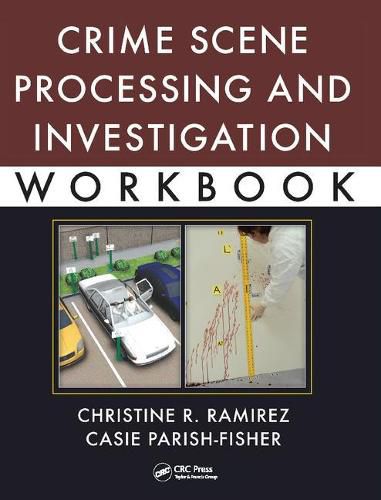Readings Newsletter
Become a Readings Member to make your shopping experience even easier.
Sign in or sign up for free!
You’re not far away from qualifying for FREE standard shipping within Australia
You’ve qualified for FREE standard shipping within Australia
The cart is loading…






The work of a crime scene investigator requires stellar organizational skills and razor-sharp attention to detail. Developing these skills is best achieved through hands-on training simulating actual case events. Crime Scene Processing and Investigation Workbook takes students from the classroom to the field and into the lab to explore a range of scenarios they will likely encounter on the job.
Exercises presented in this practical handbook include assessing the scene, crime scene photography and mapping, fingerprint evidence, documentation, impression-casting, bloodstain pattern recognition, and advanced techniques for scene processing. The book also examines the actions of the initial responding officer, highlights special scene considerations, and describes the role of crime scene analysis and reconstruction.
Designed to complement Gardner’s Practical Crime Scene Processing and Investigation, this manual uses a consistent format throughout to ensure assimilation. Each chapter begins with a list of key terms and provides learning outcomes that describe the goal of the chapter. Tasks are then broken down into specific segments, with objectives, necessary materials, and a concept overview provided to promote heightened focus on salient points in the chapter. Post-lab questions enable students to test their grasp of the material and sample worksheets are provided that can be duplicated and used in actual case scenarios. By practicing the techniques described in this manual, students will be ready when they encounter them for the first time on the job.
$9.00 standard shipping within Australia
FREE standard shipping within Australia for orders over $100.00
Express & International shipping calculated at checkout
The work of a crime scene investigator requires stellar organizational skills and razor-sharp attention to detail. Developing these skills is best achieved through hands-on training simulating actual case events. Crime Scene Processing and Investigation Workbook takes students from the classroom to the field and into the lab to explore a range of scenarios they will likely encounter on the job.
Exercises presented in this practical handbook include assessing the scene, crime scene photography and mapping, fingerprint evidence, documentation, impression-casting, bloodstain pattern recognition, and advanced techniques for scene processing. The book also examines the actions of the initial responding officer, highlights special scene considerations, and describes the role of crime scene analysis and reconstruction.
Designed to complement Gardner’s Practical Crime Scene Processing and Investigation, this manual uses a consistent format throughout to ensure assimilation. Each chapter begins with a list of key terms and provides learning outcomes that describe the goal of the chapter. Tasks are then broken down into specific segments, with objectives, necessary materials, and a concept overview provided to promote heightened focus on salient points in the chapter. Post-lab questions enable students to test their grasp of the material and sample worksheets are provided that can be duplicated and used in actual case scenarios. By practicing the techniques described in this manual, students will be ready when they encounter them for the first time on the job.